|
Bach Flower Remedies
|
Bach flo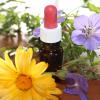 wer remedies (BFRs) are solutions of brandy and water—the water containing extreme dilutions of flower material developed by Edward Bach, an English homeopath, in the 1930s. Bach claimed that dew found on flower petals retain imagined healing properties of that plant. Systematic reviews of clinical trials of Bach flower solutions have found no efficacy beyond a placebo effect. wer remedies (BFRs) are solutions of brandy and water—the water containing extreme dilutions of flower material developed by Edward Bach, an English homeopath, in the 1930s. Bach claimed that dew found on flower petals retain imagined healing properties of that plant. Systematic reviews of clinical trials of Bach flower solutions have found no efficacy beyond a placebo effect.
Author - CYBERMED LIFE NEWS
Hits - 326
|
|
Balneotherapy
|
 Balneotherapy (Latin: balneum "bath") is the presumed benefit from disease by bathing, a traditional medicine technique usually practiced at spas. Balneotherapy (Latin: balneum "bath") is the presumed benefit from disease by bathing, a traditional medicine technique usually practiced at spas.
Author - CYBERMED LIFE NEWS
Hits - 427
|
|
Bath Sulfur
|
 Bath Sulfur, a curative bath in which the water used has sulfates dissolved in it; especially one in which the source of the water is a natural hot spring. Bath Sulfur, a curative bath in which the water used has sulfates dissolved in it; especially one in which the source of the water is a natural hot spring.
Author - CYBERMED LIFE NEWS
Hits - 204
|
|
Beef Free
|
 Beef Free: Meat-free diets typically rely on fruits and vegetables as a main source of calories. The nutrients in these foods are known to prevent many diseases while promoting good health. A vegetarian diet can provide an adequate supply of nutrients; however, it's important include a variety of different food groups in a vegetarian diet to ensure sound nutrition. Beef Free: Meat-free diets typically rely on fruits and vegetables as a main source of calories. The nutrients in these foods are known to prevent many diseases while promoting good health. A vegetarian diet can provide an adequate supply of nutrients; however, it's important include a variety of different food groups in a vegetarian diet to ensure sound nutrition.
Author - CYBERMED LIFE NEWS
Hits - 191
|
|
Behavioral Treatment
|
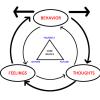 Behavioral Treatment is a broad term referring to clinical psychotherapy that uses techniques derived from behaviourism and are often used in conjunction with cognitive psychology. While behaviour analysis views everything an organism does as behaviour—including overt and covert, the cognitive psychology viewpoint is that cognition and emotions are the causes of overt behavior. Behavioral Treatment is a broad term referring to clinical psychotherapy that uses techniques derived from behaviourism and are often used in conjunction with cognitive psychology. While behaviour analysis views everything an organism does as behaviour—including overt and covert, the cognitive psychology viewpoint is that cognition and emotions are the causes of overt behavior.
Author - CYBERMED LIFE NEWS
Hits - 572
|
|
Biodex Balance System
|
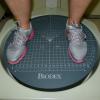 Biodex Balance System.The system allows therapists to identify a potential balance problem in just two minutes of testing by comparing balance test results to age-dependent normative data. Once identified patients can take part in a training program to correct functional deficits in their balance. Biodex Balance System.The system allows therapists to identify a potential balance problem in just two minutes of testing by comparing balance test results to age-dependent normative data. Once identified patients can take part in a training program to correct functional deficits in their balance.
Author - CYBERMED LIFE NEWS
Hits - 372
|
|
Biodynamic Farming
|
 Biodynamic Farming or Biodynamic agriculture is a form of alternative agriculture very similar to organic farming, but it includes various esoteric concepts drawn from the ideas of Rudolf Steiner (1861–1925). Initially developed in 1924, it was the first of the organic agriculture movements. It treats soil fertility, plant growth, and livestock care as ecologically interrelated tasks, emphasizing spiritual and mystical perspectives. Biodynamic Farming or Biodynamic agriculture is a form of alternative agriculture very similar to organic farming, but it includes various esoteric concepts drawn from the ideas of Rudolf Steiner (1861–1925). Initially developed in 1924, it was the first of the organic agriculture movements. It treats soil fertility, plant growth, and livestock care as ecologically interrelated tasks, emphasizing spiritual and mystical perspectives.
Author - CYBERMED LIFE NEWS
Hits - 383
|
|
Biofeedback
|
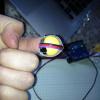 Biofeedback is the process of gaining greater awareness of many physiological functions primarily using instruments that provide information on the activity of those same systems, with a goal of being able to manipulate them at will. Some of the processes that can be controlled include brainwaves, muscle tone, skin conductance, heart rate and pain perception. Biofeedback is the process of gaining greater awareness of many physiological functions primarily using instruments that provide information on the activity of those same systems, with a goal of being able to manipulate them at will. Some of the processes that can be controlled include brainwaves, muscle tone, skin conductance, heart rate and pain perception.
Author - CYBERMED LIFE NEWS
Hits - 481
|
|
Biofeedback Thermal
|
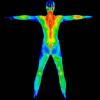 Thermal biofeedback measures skin temperature. It may be used for headache and Raynaud's disease. Thermal biofeedback measures skin temperature. It may be used for headache and Raynaud's disease.
Author - CYBERMED LIFE NEWS
Hits - 204
|
|
Blood Donation
|
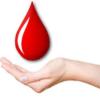 A blood donation occurs when a person voluntarily has blood drawn and used for transfusions and/or made into biopharmaceutical medications by a process called fractionation (separation of whole-blood components). Donation may be of whole blood (WB), or of specific components directly (the latter called apheresis). Blood banks often participate in the collection process as well as the procedures that follow it. A blood donation occurs when a person voluntarily has blood drawn and used for transfusions and/or made into biopharmaceutical medications by a process called fractionation (separation of whole-blood components). Donation may be of whole blood (WB), or of specific components directly (the latter called apheresis). Blood banks often participate in the collection process as well as the procedures that follow it.
Author - CYBERMED LIFE NEWS
Hits - 316
|
|
Blood Pressure: High
|
Blood Pressure: High - Hypertension (HTN or HT), also known as high blood pressure (HBP), is a long-term medical condition in which the blood pressure in the arteries is persistently elevated. High blood pressure usually does not cause symptoms. Long-term high blood pressure, however, is a major risk factor for coronary artery disease, stroke, heart failure, atrial fibrillation, peripheral vascular disease, vision loss, chronic kidney disease, and dementia.
High blood pressure is classified as either primary (essential) high blood pressure or secondary high blood pressure. About 90–95% of cases are primary, defined as high blood pressure due to nonspecific lifestyle and genetic factors. Lifestyle factors that increase the risk include excess salt in the diet, excess body weight, smoking, and alcohol use. The remaining 5–10% of cases are categorized as secondary high blood pressure, defined as high blood pressure due to an identifiable cause, such as chronic kidney disease, narrowing of the kidney arteries, an endocrine disorder, or the use of birth control pills.
Blood pressure is expressed by two measurements, the systolic and diastolic pressures, which are the maximum and minimum pressures, respectively. For most adults, normal blood pressure at rest is within the range of 100–130 millimeters mercury (mmHg) systolic and 60–80 mmHg diastolic. For most adults, high blood pressure is present if the resting blood pressure is persistently at or above 130/90 or 140/90 mmHg. Different numbers apply to children. Ambulatory blood pressure monitoring over a 24-hour period appears more accurate than office-based blood pressure measurement.
Lifestyle changes and medications can lower blood pressure and decrease the risk of health complications. Lifestyle changes include weight loss, decreased salt intake, physical exercise, and a healthy diet. If lifestyle changes are not sufficient then blood pressure medications are used. Up to three medications can control blood pressure in 90% of people. The treatment of moderately high arterial blood pressure (defined as >160/100 mmHg) with medications is associated with an improved life expectancy. The effect of treatment of blood pressure between 130/80 mmHg and 160/100 mmHg is less clear, with some reviews finding benefit and others finding unclear benefit. High blood pressure affects between 16 and 37% of the population globally. In 2010 hypertension was believed to have been a factor in 18% of all deaths (9.4 million globally).
Author - CYBERMED LIFE NEWS
Hits - 524 Synonyms -
Hypertension
|
|
Blood-letting
|
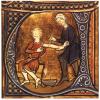 Bloodletting (or blood-letting) is the withdrawal of blood from a patient to prevent or cure illness and disease. Bloodletting was based on an ancient system of medicine in which blood and other bodily fluids were regarded as "humours" that had to remain in proper balance to maintain health. Bloodletting (or blood-letting) is the withdrawal of blood from a patient to prevent or cure illness and disease. Bloodletting was based on an ancient system of medicine in which blood and other bodily fluids were regarded as "humours" that had to remain in proper balance to maintain health.
Author - CYBERMED LIFE NEWS
Hits - 421
|
|
Body Compression Therapy
|
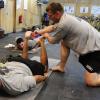 Body Compression Therapy: When you have a cut, what's one of the first things you do? You apply pressure. Pressing gauze or a compress against the wound helps to prevent blood loss and promote clotting, essentials for any serious injury. Body Compression Therapy: When you have a cut, what's one of the first things you do? You apply pressure. Pressing gauze or a compress against the wound helps to prevent blood loss and promote clotting, essentials for any serious injury.
While compression is a common answer to a bleeding wound, open cuts are far from the only medical problem that can be answered with this strategy. If you are experiencing pain caused by arthritis or another chronic condition, compression therapy could be a possible treatment to help you find relief.
Author - CYBERMED LIFE NEWS
Hits - 237
|
|
Breast Ultrasound
|
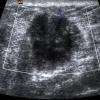 A breast ultrasound is an imaging technique commonly used to screen for tumors and other breast abnormalities. The ultrasound uses high-frequency sound waves to produce detailed images of the inside of the breasts. Unlike X-rays and CT scans, ultrasounds don’t use radiation and are considered safe for pregnant women and breast-feeding mothers. A breast ultrasound is an imaging technique commonly used to screen for tumors and other breast abnormalities. The ultrasound uses high-frequency sound waves to produce detailed images of the inside of the breasts. Unlike X-rays and CT scans, ultrasounds don’t use radiation and are considered safe for pregnant women and breast-feeding mothers.
Author - CYBERMED LIFE NEWS
Hits - 288
|
|
Breastfeeding
|
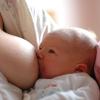 Breastfeeding, also known as nursing, is the feeding of babies and young children with milk from a woman's breast. Health professionals recommend that breastfeeding begin within the first hour of a baby's life and continue as often and as much as the baby wants. During the first few weeks of life babies may nurse roughly every two to three hours. The duration of a feeding is usually ten to fifteen minutes on each breast. Older children feed less often. Mothers may pump milk so that it can be used later when breastfeeding is not possible. Breastfeeding has a number of benefits to both mother and baby, which infant formula lacks. Breastfeeding, also known as nursing, is the feeding of babies and young children with milk from a woman's breast. Health professionals recommend that breastfeeding begin within the first hour of a baby's life and continue as often and as much as the baby wants. During the first few weeks of life babies may nurse roughly every two to three hours. The duration of a feeding is usually ten to fifteen minutes on each breast. Older children feed less often. Mothers may pump milk so that it can be used later when breastfeeding is not possible. Breastfeeding has a number of benefits to both mother and baby, which infant formula lacks.
Author - CYBERMED LIFE NEWS
Hits - 501
|